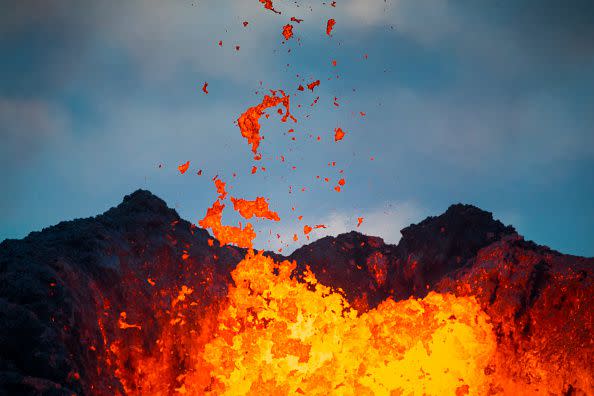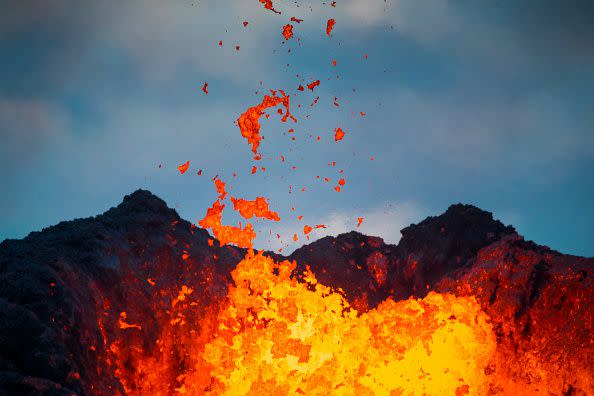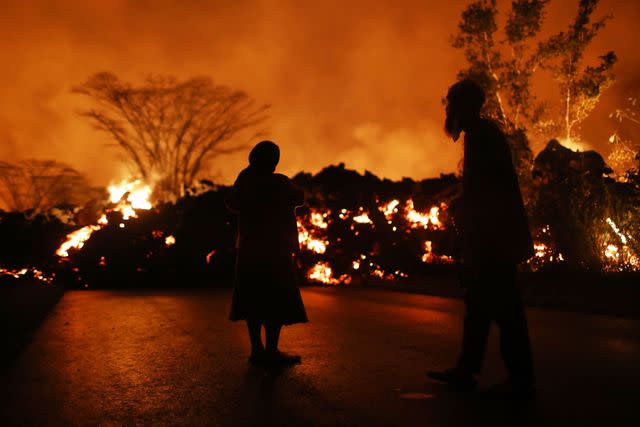Hawaii’s Kilauea Volcano Erupts as Officials Warn of Potential Hazards Like Pele’s Hair and Vog

The Hawaiian Volcano Observatory is "closely" monitoring the eruption, but says there's currently "no indication that populated areas are threatened"

Hawaii’s Kilauea volcano is erupting for the second time this year.
The Hawaiian Volcano Observatory (HVO) said the volcano’s latest eruption began in Kīlauea’s summit caldera, located in Hawaii Volcanoes National Park, around 4:45 a.m. local time on Wednesday.
Webcam footage shows numerous fissures “at the base of Halemaʻumaʻu crater,” according to a press release from the agency, which is “closely” monitoring the eruption.
Volcanic activity is currently contained to the caldera, according to the HVO, which operates under the United States Geological Survey (USGS).
Hawaii EMA said on Twitter that “there is no indication that populated areas are threatened” by the eruption.
HVO officials said on Wednesday that hazards "will be reassessed as the eruption progresses," but that “high levels of volcanic gas” are the primary concern as that can have “far-reaching effects down-wind.”

Sulfur dioxide (SO2) released during the eruption “will react in the atmosphere to create the visible haze” known as volcanic smog, or “vog,” which has already been observed downwind of the volcano, per the agency.
“Vog creates the potential for airborne health hazards to residents and visitors, damages agricultural crops and other plants, and affects livestock,” officials said.

They are also warning of several other hazards, including ash falls, a phenomenon known as “Pele's hair” as well as “other lightweight volcanic glass fragments.”
Residents are encouraged to minimize their exposure to the aforementioned particles, “which can cause skin and eye irritation,” according to the agency.
Never miss a story — sign up for PEOPLE's free daily newsletter to stay up-to-date on the best of what PEOPLE has to offer, from celebrity news to compelling human interest stories.
Dangers closer to the eruption site — specifically “within the area closed to the public” since late 2007 — include crater wall instability, ground cracking, rockfalls and earthquakes.
“This underscores the extremely hazardous nature of Kīlauea caldera rim surrounding Halema'uma'u crater," the HVO said.
Related: Why Is the Sun Red? All About the Air Quality Index and What It Means for Your Health
This is the second time Kilauea has erupted this year. The last eruption began Jan. 5 and lasted 61 days, according to Hawaii News Now.
Two months prior, Mauna Loa on Hawaii’s Big Island erupted for the first time in 38 years. Mauna Loa is considered one of the world's largest active volcanoes.
Live footage of the eruption can be viewed online via the USGS’ webcam.
For more People news, make sure to sign up for our newsletter!
Read the original article on People.

 Yahoo Sports
Yahoo Sports 